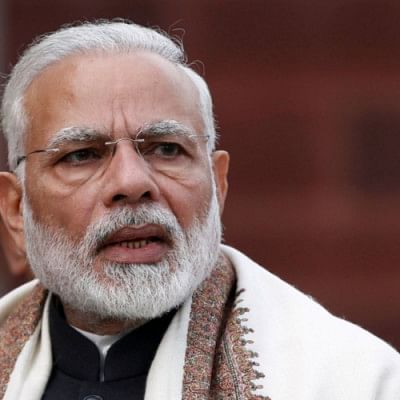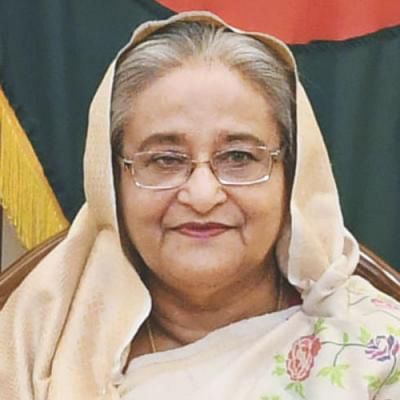Asia’s balancer, Bangladesh

Remember those expansive aphorisms, "Britannia rules the waves" and the "empire where the sun never sets"? Don't they look odd against today's restrictive "Brexit" mindset? They may be rescued by a third, more relevant power policy cliché today: "Great Britain, Europe's power balancer". Not many countries today have what Britain skilfully displayed for over a century to earn that coveted title. One of them, Bangladesh, may have no choice but to learn it fast. Sandwiched between China and India, both trying to make sense of a decaying global order, paltry Bangladesh's plight echoes England's from the 16th century against more powerful European empires.
Three features beg attention: (a) China rekindling its historical global leadership roles; (b) India's signed, sealed, and almost delivered encirclement by China, safeguarding China's new Indian Ocean flanks no less; and (c) with global competition shifting east from the Atlantic Ocean to the Indian, the emergent "Indo-Pacific" label dictating strategic discourses.

Located as it is on a smaller chessboard, Bangladesh straddles an increasingly pivotal region where history's two most populous countries, China and India, now brandish their own hardware. Having served as the largest world economy once, both still seem bent on recreating that stature, with a military counterpart to boot. Both are also emerging from their half-century communist or nationalist cocoons. China's Belt Road Initiative (BRI) roadmap, for instance, already girdles India, while India's looser and more multifarious counterparts hop, skip, and jump over the regional BRI cordon, scopes sturdier global partnerships. India has bagged deals with a now chummy-chummy United States, naval and other agreements with France, growing linkages with Japan, convergent minds (and matter) with Australia, and diffusive Southeast Asian outlets as credentials. Should China-India rivalry thicken, though, India's neighbourhood might become its Achilles Heel: India's "guns" and China's "butter" characterise that neighbourhood, depicting an India alienated where it matters the most, and a South Asian perimeter abandoned to China (for only China to lose).

Afghanistan's horns remain as before, locked in ethnic battles (disguised in jihadi cloak), now laced with Indian security interests; Bangladesh, fenced off by its very own umbilical partner, India, grieves the diversion of common rivers to India, among other inflictions; Bhutan just escaped a China-India stand-off; isolationist Myanmar flirts with both China and India; Nepal's sayonara to India contrasts with Pakistan's facilitative Taleban's resurgence in Afghanistan; and Sri Lanka's landlocked sub-continental soul militates against its China-bound heart and mind (and pockets).
Two from that group carry "balancer" credentials: a regionally sandwiched Bangladesh; and the globally estranged Myanmar. Bangladesh is examined here.
With almost USD 100 billion of commerce flowing between them, neither China nor India needs strategic collision today. Yet, as Bhutan's Doklam standoff indicated, one over-zealous local move could trigger costly strategic consequences. Even by encircling India with both economic corridors and indebted neighbours (exchanging real estate for financial write-offs, as Sri Lanka did with Hambantota Port; and possibly Pakistan with Gwador Port), China is still unable to write the sub-continental script alone.
Counterpart Indian gestures even antedate China's BRI emergence. Former Prime Minister P V Narashima Rao's 1991 "Look East" Indian policy proposal feeds another encirclement thesis, a "ring around China" scheme when Russia was closer to India than China. Until Narendra Modi's "Act East" targeted Southeast Asia more forcefully from November 2014, India wooed South Asian countries like an adrenalised newcomer to regional integration.
Using the December 1985 South Asian Association for Regional Cooperation (SAARC) Charter, India launched the 1997 BIMSTEC (Bay of Bengal Initiative for Multi-sectoral, Scientific, Technical, and Economic Cooperation) platform, which even proposed its own free-trade agreement in 2006, then concluded the January 2004 South Asian Free Trade Agreement (SAFTA), before chalking out Kolkata-Hanoi Railway (Mekong-India Economic Corridor) project and the 2,800-km Bangladesh-China-India-Myanmar (BCIM) Highway.
Adopting "Act East" spawned BIMSTEC-promoting plans: a Kunming-Kolkata Economic Corridor from 2015, the 1,360-km Trilateral Highway linking India with Myanmar and Thailand, from 2018, and the Bangladesh-Bhutan-India-Nepal (BBIN) Highway from 2019. The more these have stalled, the more the cooperative start has wrinkled. Business-minded Indian pockets in Malaysia, Singapore, and Thailand energetically pump Southeast Asian visions, just as their Chinese counterparts do likewise for China. India's original plan to access them through Bangladesh may be shifting to a Siliguri counterpart and a Bay of Bengal transit to Sittwe, Myanmar. Fenced-in Bangladesh must now carve its own Southeast Asian passages with a balancing motif (as its multiple trade negotiations suggest), fully cognisant that, though India cannot live with a too fancy-free Bangladesh, living without Bangladesh is virtually impossible.
As two sleepy Asian giants awaken, major global power-distribution changes greet them: like a prior European order a century ago, the Atlantic order is also unravelling, with Asia's geopolitical and geo-economic interests rapidly ramping up. South Asia's strategic stock-market value cannot but shoot through the ceiling, opening, as it does, balancing opportunities for lesser countries. Bangladesh's Metternich-producing windows open up right here.
That must be too much to swallow in one strategic breath, but Bangladesh's rendezvous with destiny could be at its doorstep with China accessing the Bay of Bengal. Since China's string-pulling, especially among BRI recipients, has thus far exceeded any other country's, Bangladesh could get front-seat view of the grandest naval show of them all.
Prime Minister Sheikh Hasina's latest New Delhi visit reinforced not just Bangladesh's umbilical link with India, but also its one-man-band Southeast Asian sojourn. Several deals were signed with India, but how the hearts, minds, and souls click may say more. As partial summit host, the World Economic Forum (WEF) offered an alternate BRI paradigm, inducing India to extend it to Bangladesh, if only to preserve Atlantic remnants in South Asia.
Do Bangladesh and Indian hearts, minds, and souls click today as in 1971? Though many new deals were signed in New Delhi, expected old ones were not, including river water-sharing, easing trade bottlenecks, and forging Rohingya-influx commonality. Warmth, both between leaders in the two countries and within respective business communities, has not percolated down to the more negatively inclined masses. Likewise, warmth at the centre but not at province-levels also clips the fundamentals. Still, slow-downs, as now, sustain more than scuttle the spirit.
Speaking from behind barbed wires, Bangladesh's response cannot but be a variable. It is too inundated with Indian products, some eliciting endearment, like movies, but others, like Tata trucks, triggering street-side snide. Adding trade asymmetry, smuggling, and India-drifting remittances only predict ploughshares turning into swords.
China's entry displaced India as Bangladesh's largest trading partner, encouraged Chinese settlers in Bangladesh, and supplied the much-needed moral support, as when the World Bank withdrew its Padma Bridge funding (China's counter-offer was politely declined though). India's unassailable advantage is China's opposition to Bangladesh when it mattered the most, in 1971. Yet, with neither country behind us over the current Rohingya influxes, we must shift from our adolescent dalliances into adulthood pragmatism: that one-night-stand mindset must go, assertiveness must show, much as Britain demonstrated in 19th century Europe. Bangladesh must also emulate Britain's outreaches to European countries and engage other Asian countries.
Prime Minister Sheikh Hasina's South-Southeast Asia bridgehead proposal in New Delhi was a bold departure: we did not need India's "Act East" as a platform. Simultaneously our infrastructure-building indebtedness to China (as a proportion of our gross domestic production), is among the lowest of all BRI recipients of Chinese funds. We seek Japan's developmental support, Japan seeks investment outlets (not to mention demographic and security insurance too), and both countries savoured the lavish Summit Power-JERA Asia partnership as a hopeful future trajectory.
A longer trek remains, but industrial diversification, sustaining 8+ percent growth-rate, and a middle-income climb suggest that if push ever came to shove, only our balancing skills can bail us out. With two free feet, dithering can no longer be an option.
Imtiaz A Hussain is the Head of Global Studies & Governance Program at Independent University, Bangladesh (IUB).

 For all latest news, follow The Daily Star's Google News channel.
For all latest news, follow The Daily Star's Google News channel. 



Comments